Michigan vegetable crop report – August 23, 2023
Corn earworms are here. Late-season plantings are being harvested.
Weather
Watch Jeff Andresen’s weather update here.
Here is this week’s forecast:
- Variably cloudy today, Aug. 23, with scattered showers and thunderstorms this morning, especially to the east. Strong storms with hail, heavy rain and damaging winds possible. Decreasing clouds and much warmer to the southwest.
- Hot and humid in the southwest Thursday, Aug. 24, with afternoon high values above 100 degrees Fahrenheit. Showers and thunderstorms possible tonight through tomorrow evening.
- Scattered showers and thundershowers possible again Friday afternoon and evening northwest spreading southeast overnight.
- Mostly fair, dry and cooler this weekend. Showers possible again next Monday and Tuesday.
- High temperatures near 80 F north to the low and mid-90s southwest Wednesday and Thursday, cooling to the low to mid-70s this weekend and early next week. Low temperatures in the upper 50s to mid-70s Thursday, cooling back to the upper 40s to low 50s this weekend.
- Medium range outlooks generally call for cooler and drier than normal weather into early September. New long lead outlooks for the fall call for normal to above normal mean temperatures and normal to below normal precipitation totals.
Weed of the week
Horsenettle (Solanum carolinense) is a perennial nightshade weed found mostly in southern Michigan. This weed can be identified by its wavy leaves that are similar to eggplant but with more pointed lobes, its white or purple star-shaped flowers, and the presence of spines on the stem/petiole/leaf midrib. These thorns reduce palatability to grazing animals and make it difficult for workers to hand-pull, even with protective gloves on. This weed prefers sandier soil textures and warm climates, originating in the southeast U.S.
Horsenettle populations build more rapidly in perennial cropping systems or in long-season crops where tillage only occurs in the spring. Rotating to shorter season grains or vegetables allows for more tillage opportunities for disrupting horsenettle growth and establishment. However, tilling may also spread around rhizome fragments that can regenerate—a common issue with using tillage to manage perennial weeds.
Reflex (fomesafen) is a preemergent herbicide with decent activity on horsenettle that is currently on a supplemental label for vegetables like pumpkins, squash, tomatoes and peppers set to expire for Michigan at the end of 2023. 2,4-D can also provide systemic, post-emergent control on the weed. The most promising time to eradicate horsenettle is before it has had a chance to establish a developed root system in the field.
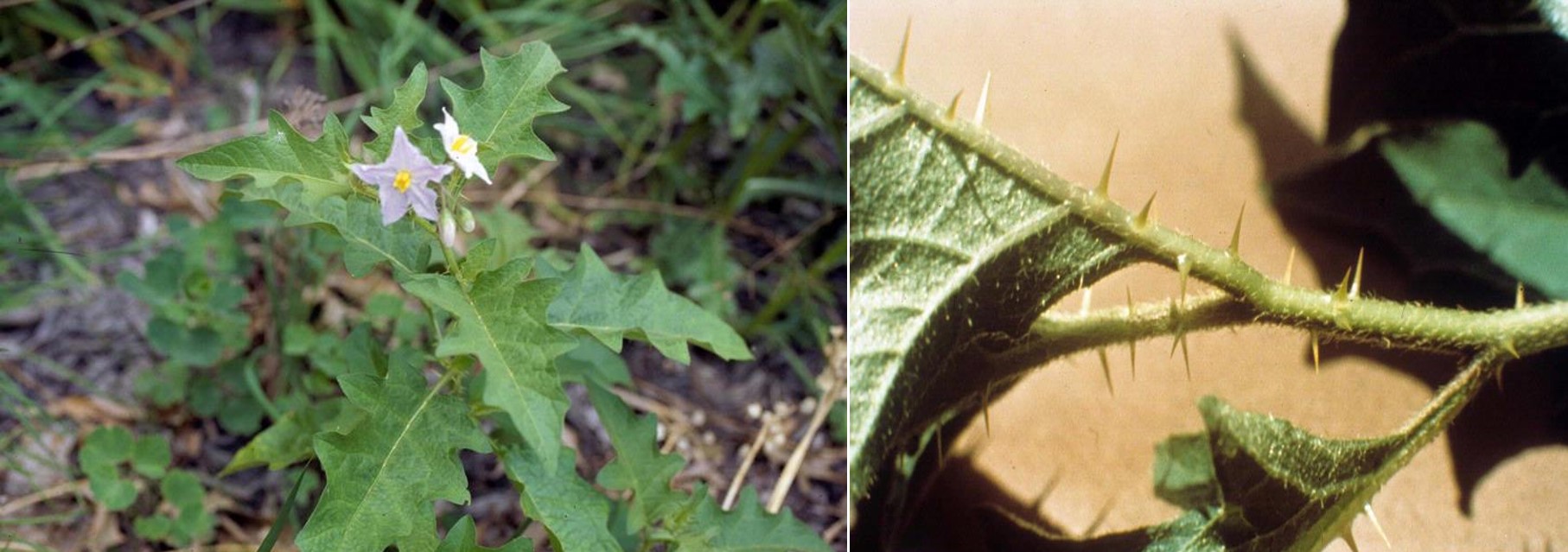
2023 MSU Extension Southeast Michigan Farmer Survey
MSU Extension is pleased to announce our 2023 Southeast Michigan Farmer Needs Assessment Survey. This survey will gather information about your farm and your potential interest in learning more about various farm-related topics. The information gathered will inform future programs and educational opportunities offered by MSU Extension educators for agricultural producers in southeast Michigan. This survey will take approximately 10 minutes to complete and is accessible at the link below:
Take the 2023 MSU Extension Southeast Michigan Farmer Needs Assessment Survey!
Feel free to share the survey link with other growers. We welcome any participation in the survey in order to help Michigan State University Extension better serve its communities.
Crop updates
Asparagus
Between five and 11 disease severity values (DSVs) accumulated between Aug. 15-21 in seven Oceana County asparagus fields MSU Extension is monitoring. Based on DSVs at these locations, a fungicide application would have been due Monday, Aug. 21, if nothing had been applied since about the first week of August. Read more about purple spot control in our June 14 report.
Cucurbits/pickles
Cucurbit downy mildew has been confirmed in 11 counties to date: Saginaw, Monroe, Washtenaw, Ingham, Branch, Arenac, Bay, Berrien, Allegan and Ottawa. As of Aug. 22, all of the spores in traps have been all clade-2, which infects cucumbers, pickles and melons (but not squash and pumpkin). See this report for details on fungicides. Track movement of spores and learn about identification of this disease at MSU Downy Mildew News. In northern Ohio, clade-1 has been reported on pumpkins.
In a variety trial at the Southwest Michigan Research and Extension Center, the yield data was finished on Aug. 11 and then downy mildew settled in the next week. This well-timed natural occurrence is allowing us to observe varietal differences in their decline.
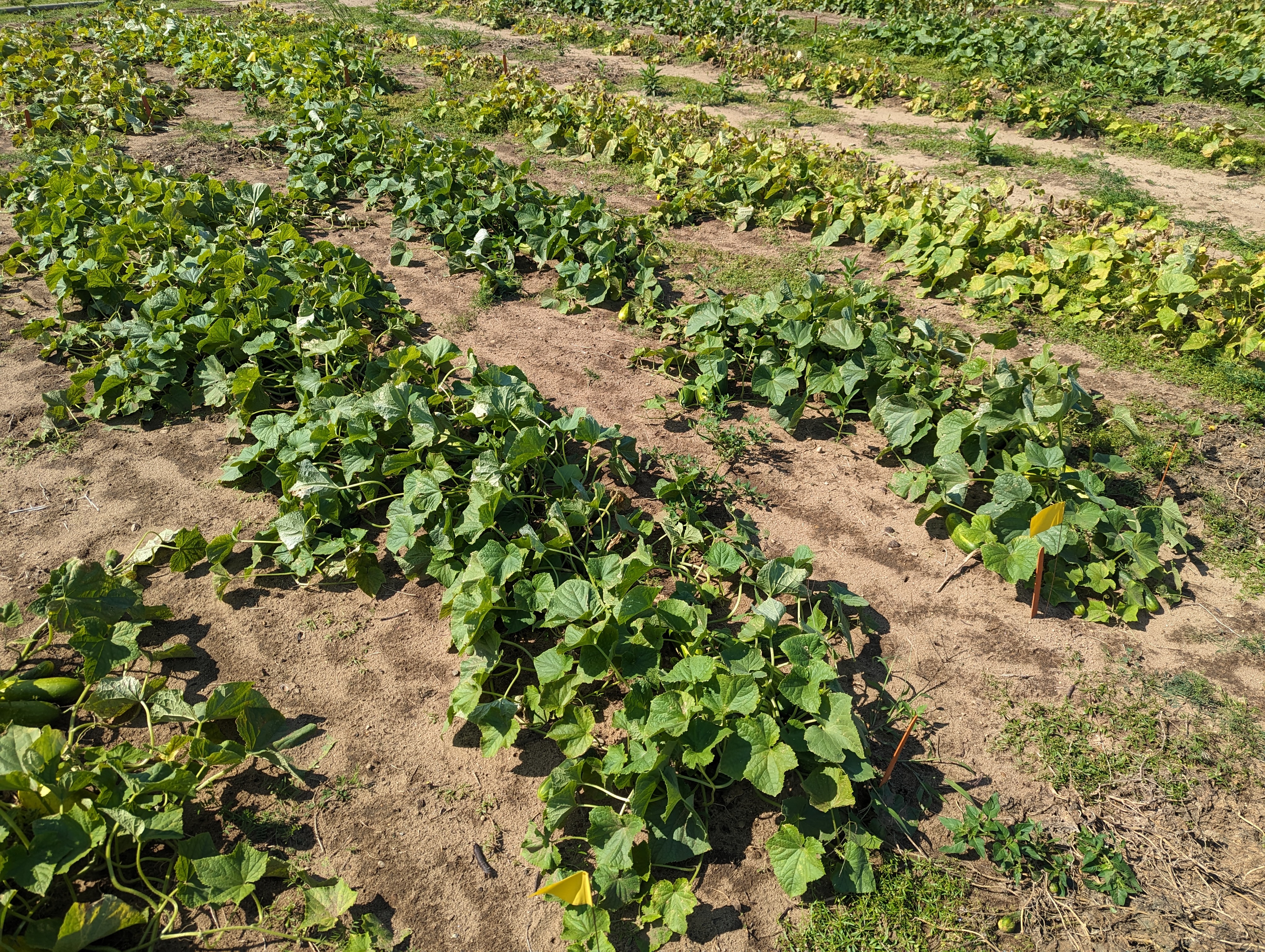
Squash bugs continue to be an issue on some farms. If populations exceed the economic threshold in pumpkins (one adult per plant or one egg mass/per plant after the seedling stage), applying a neonicotinoid or carbamate insecticide might be warranted to prevent plant damage that would compromise pumpkin quality. For squash plantings nearing their last harvests, it may not pay to apply an insecticide at this point. Products labeled for squash bugs are most effective at the early nymph stage. Crop rotation and removing residue that provide overwintering areas for squash bugs will also help keep populations down in subsequent seasons.
Fruiting vegetables
Processing and fresh-market tomato harvests continue in southern Michigan. Tomatoes appeared to slow their ripening last week, and the unripe fruit loads were enough to topple some trellises in southwest Michigan with the storm we received.
Bacterial canker is a tough disease to manage, but an easy one to test for. Testing strips from Agdia can be used to detect this pathogen right on the farm. Symptoms of bacterial canker include firing at leaf edges, interveinal necrosis, and brown streaks in the stem vascular tissue. Learn more about this disease in an article from Cornell University, “Bacterial canker of tomato.”
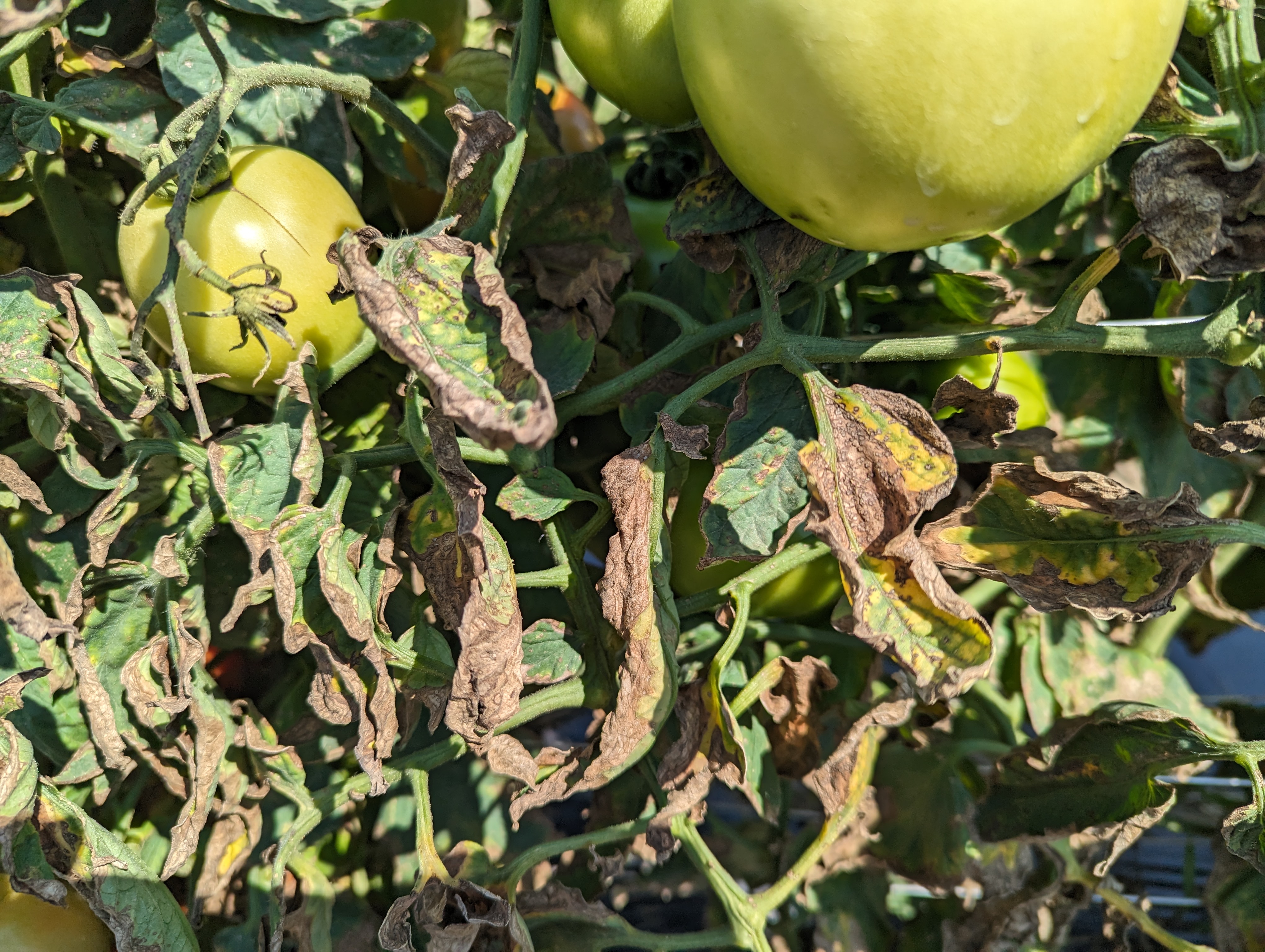
Fruit quality issues abound in tomatoes right now. Some are easy to see on the outside of the fruit, such as thrips and stink bug feeding, bacterial spot, catfacing and zippering. However, some issues can only be observed once the fruit is cut open. Internal white tissue is associated with a poor balance of nutrients, most typically the ratio between nitrogen and potassium. Higher levels of potassium and lower levels of nitrogen at fruit set appear to remedy this issue.
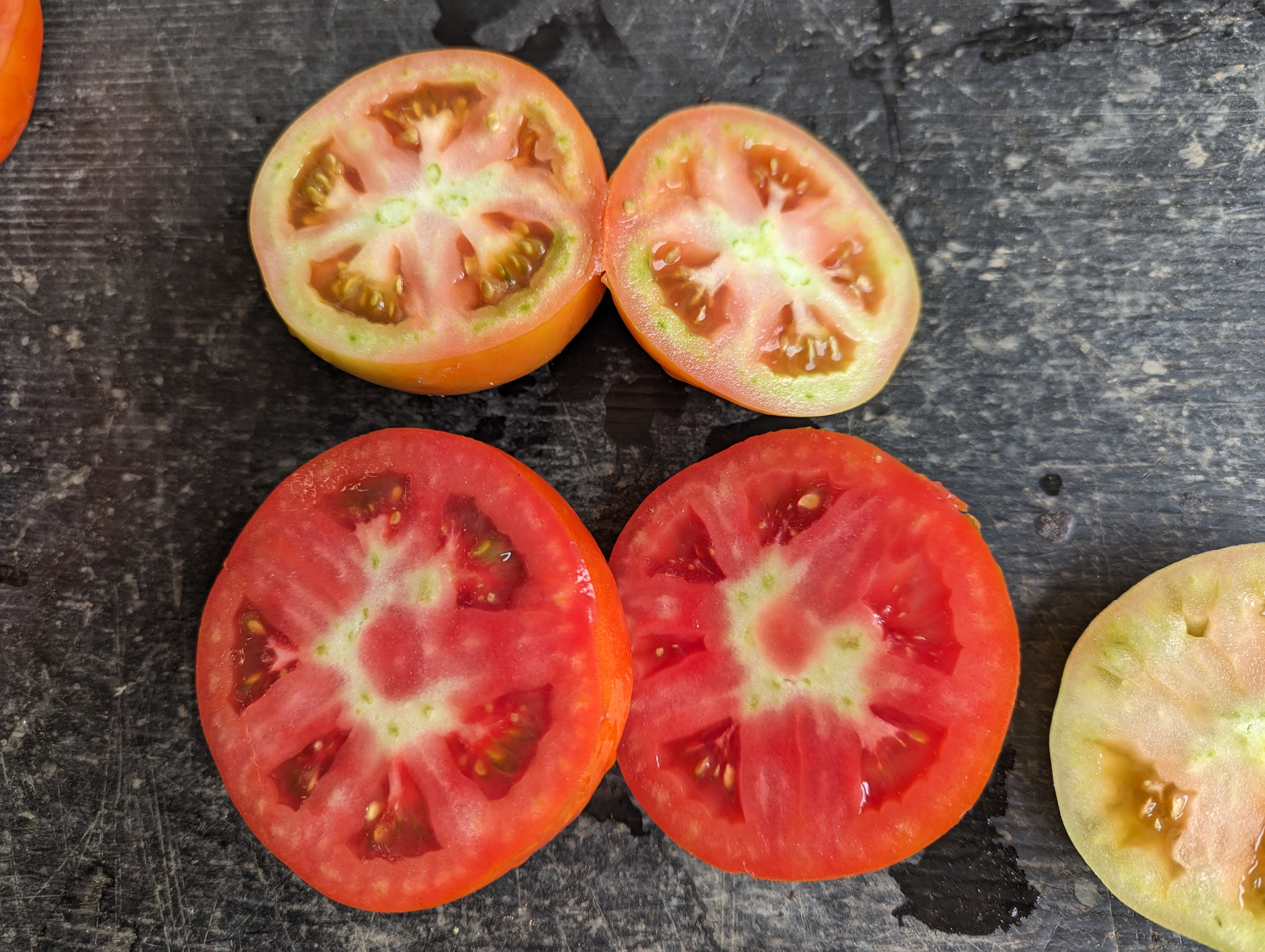
Leafy greens
Growers who manage high tunnels may be considering what crops to put in for winter harvest once their summer crop has declined in productivity. Cold-hardy greens like kale or spinach can command a premium price for fresh market sales at winter farmers’ markets or to wholesalers/restaurants, as well as fill out year-round community supported agriculture orders. Winter hoophouse greens need to be planted early enough so that they are nearly mature by the time temperature drops below 32-35 F and daylength drops below 10 hours a day. Crop growth is minimal beneath these thresholds, so at that point the hoophouse serves more as a large cooler for the plants as they remain in stasis. Floating row covers and supplemental heat can further alter the microclimate to accelerate crop growth or keep the crop alive during very low temperatures.
While winter greens can generate more cash flow in slower times of the year, finding a niche in sales of specialty greens/herbs throughout the year can help further diversify your business. Microgreens are a popular crop that require little capital to get into and are highly valued by customers. Subtropical crops like ginger and lemongrass can be successfully grown under plastic in the Midwest but may be difficult to unload unless you are set up with the proper markets (grocery stores, restaurants, breweries). Some particularly entrepreneurial growers supplement their farmstand by selling edible weeds like common lambsquarters or purslane as specialty greens to consumers eager for novel produce.
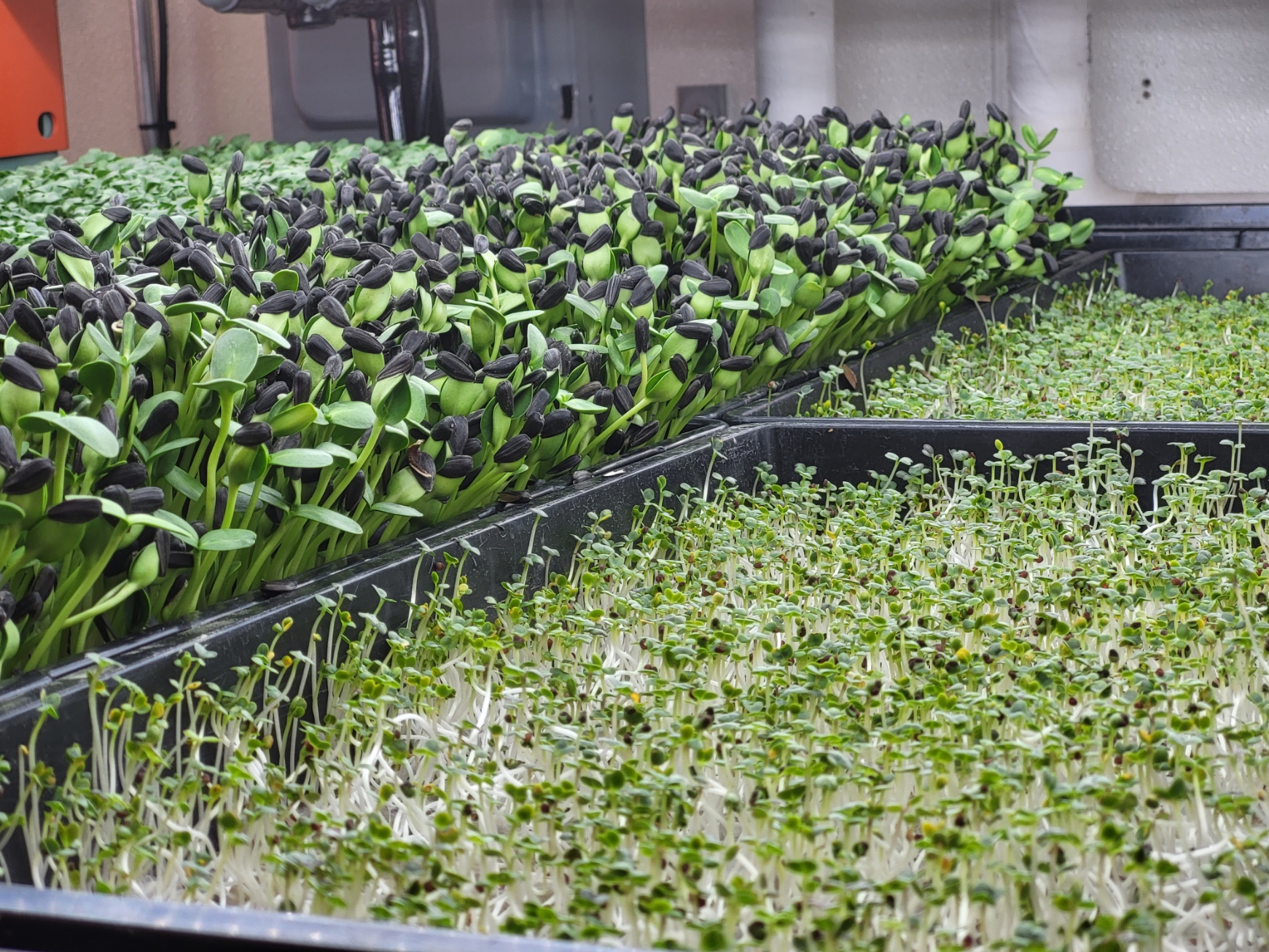
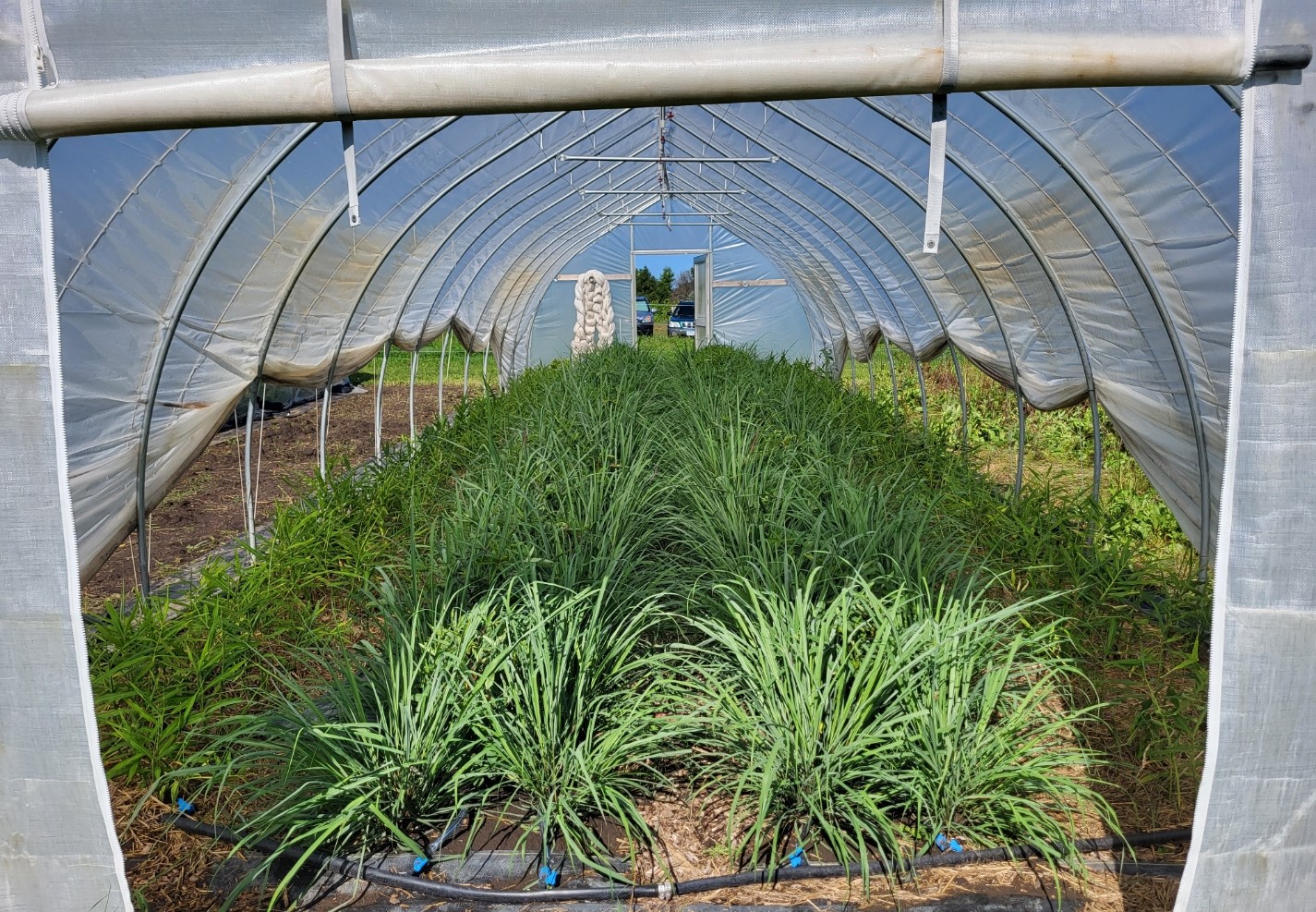
Sweet corn
According to Insect Forecast, weather was favorable for transport of earworm moths from southern climates to Michigan on Aug. 19, 20 and 23.
To our south, all Purdue University trap sites are now catching corn earworm each evening, with very high captures in some locations. Ohio also reported lower numbers on their Lep Monitoring Network Update #16. Pressure may also increase in sweet corn as field corn silks turn brown, so it is a good time of year to keep an eye on traps. Corn earworm catches for MSU Extension traps in Monroe County continue to be low, but other growers keeping traps in Monroe County report higher corn earworm catches (about four per night).
A spray interval of five days may suffice when captures in a steel trap are less than five per night. A two- to three-day interval could provide better protection if and when captures approach 50 per night. See more information on interpreting captures from cloth traps.
|
Corn earworm captures. Total in trap for week1 (avg # per night2) |
|||||
|---|---|---|---|---|---|
|
Week |
Ottawa County |
Oceana County |
Monroe County |
Wayne County |
Berrien County |
|
8/23 |
- |
- |
0 (0) |
- |
53 (7.5) |
|
8/16 |
3 (<1) |
6 (2) |
0 (0) |
0 (0) |
15 (2) |
|
8/9 |
0 (0) |
0 (0) |
0 (0) |
0 (0) |
0 (0) |
|
7/31 |
0 (0) |
0 (0) |
0 |
0 |
1 (<1) |
|
7/24 |
2 (<1) |
1 (<1) |
0 |
1 (<1) |
1 (<1) |
|
7/17 |
0 (0) |
0 (0) |
0 (0) |
1 (<1) |
- |
|
7/10 |
- |
0 (0) |
0 (0) |
0 (0) |
- |
|
7/3 |
- |
0 (0) |
3 (<1) |
0 (0) |
- |
|
1Total number collected since last trap check; 2The total number divided by the number of nights since the last trap check |
|||||
On-Farm Food Safety
MSU and the conservation districts offer a program to visit your farm to go over your food safety program to provide critiques and comfort in a confidential fashion. You can then use these notes to make changes ahead of an actual inspection from the Michigan Department of Agriculture and Rural Development. If you are interested in an On-Farm Readiness Review, please fill out this On-Farm Readiness Review request survey to start the scheduling process (the sooner the better).
Events
- August 24, 7–8 a.m., Field Crops Virtual Breakfast: Timing The Last Irrigation Application
- August 31, 7–8 a.m., Field Crops Virtual Breakfast: Setting The Stage For Record Breaking Wheat Yields
- September 7, 7–8 a.m., Field Crops Virtual Breakfast: Marketing Your Grain Crops
- September 13, 5:30 p.m.–8 p.m., Tools at Twilight: Soil & Water Management Field Day & Demonstrations
- September 14, 7–8 a.m., Field Crops Virtual Breakfast: Monitoring Nematode Resistance In Soybeans
- September 19-21, Farm Science Review
- September 21, 7–8 a.m., Field Crops Virtual Breakfast: Fall Weed Control
- September 27, Wooster, OH, Midwest Mechanical Weed Control Field Day
-
November 2, 8 a.m.–5 p.m., Understanding and Addressing Agricultural Labor Challenges in the United States
This work is supported by the Crop Protection and Pest Management Program [grant no 2021-70006-35450] from the USDA National Institute of Food and Agriculture. Any opinions, findings, conclusions, or recommendations expressed in this publication are those of the author(s) and do not necessarily reflect the view of the U.S. Department of Agriculture.



 Print
Print Email
Email

